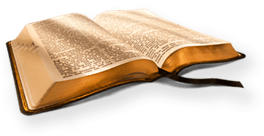King James Bible
King James Version (KJV)


"(1.) Heb. hatsir, ripe grass fit for mowing (1 Kings 18:5; Job" 40:15; Ps. 104:14). As the herbage rapidly fades under the "scorching sun, it is used as an image of the brevity of human" "life (Isa. 40:6, 7; Ps. 90:5). In Num. 11:5 this word is" "rendered "leeks." "(2.) Heb. deshe', green grass (Gen. 1:11, 12; Isa. 66:14; Deut. "32:2). "The sickly and forced blades of grass which spring up on" the flat plastered roofs of houses in the East are used as an "emblem of speedy destruction, because they are small and weak," "and because, under the scorching rays of the sun, they soon" "wither away" (2 Kings 19:26; Ps. 129:6; Isa. 37:27)." "The dry stalks of grass were often used as fuel for the oven (Matt. 6:30; 13:30; Luke 12:28). Belongs to the class of neuropterous insects called Gryllidae. This insect is not unknown in Palestine. "In Judg. 6:5; 7:12; Job 39:30; Jer. 46:23, where the Authorized "Version has "grasshopper," the Revised Version more correctly" "renders the Hebrew word (`arbeh) by "locust." This is the case" "also in Amos 7:1; Nah. 3:17, where the Hebrew word gob is used;" "and in Lev. 11:22; Num. 13:33; Eccl. 12:5; Isa. 40:22, where" hagab is used. In all these instances the proper rendering is "probably "locust" (q.v.)."